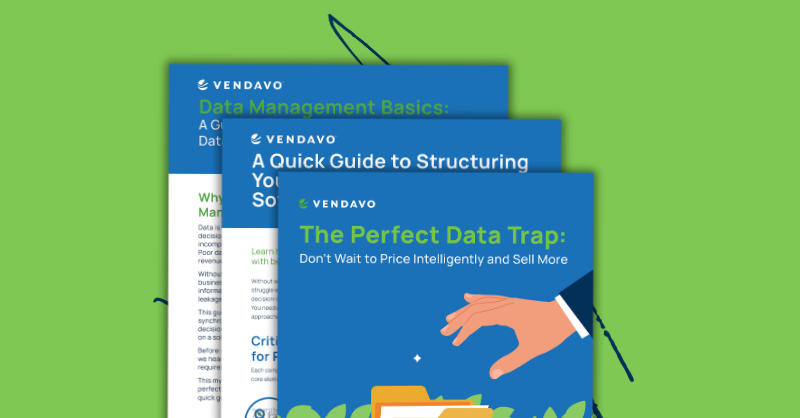What is Penetration Pricing Strategy?
Penetration pricing is a marketing strategy whereby an organization sets a low price for its product or service to rapidly gain a significant market share. The goal is to attract a large number of customers and establish the product or service as the preferred choice in the market.
A market penetration pricing strategy is often employed when an organization enters a new market or introduces a new product where competition is already intense. It can also be deployed during times of price deflation and reduction, utilizing first-mover advantages for market share land grabs. The idea is that the low initial price will encourage quick adoption by prospects that have otherwise been difficult to gain as customers, creating a stronger customer base.
These prices aren’t set in stone, though. Organizations may decide to increase prices, introduce complementary products, or other value-add services to maximize profitability and create greater customer loyalty once it has gained a larger market share. Companies that use dynamic pricing by responding to market trends proactively and dynamically will help keep the penetration pricing strategy effective.
How Does a Penetration Pricing Strategy Look in Practice?
Penetration pricing can be an effective tactic for organizations that are looking to build a wider customer base that has been previously difficult to reach, brand awareness, overcome any initial resistance during a product or service launch, and secure a competitive position in the market. But it requires careful planning and consideration of long-term pricing strategies to ensure sustained success, as well as effective communication and marketing of those prices, however.
Here’s a quick look at how penetration pricing strategy looks in practice:
- A new smartphone entering a competitive market needs interest and market share.
- The company providing it might set the initial price of the smartphone lower than similar devices from its competitors.
- Products that are of similar or better value could see a rapid influx of customers who are enticed by affordability.
- The company might also offer promotional deals or discounts to further incentivize early adoption in the market.
- It may reassess its pricing strategy after a product gains market share and loyalty, then increase prices or introduce premium versions to maximize its competitive edge.
B2B strategies are driven by a lot of factors, including the current market, the product’s perceived value, and the selling company’s ability to sustain customer interest beyond the initial offering or low pricing phase.
Benefits of a Penetration Pricing Strategy
Every strategy requires careful thought and implementation to be successful. A well-crafted, competitive pricing strategy offers several benefits for companies looking to establish a strong market presence, including:
- Rapid market entry
By setting an initially low price, an organization can quickly attract new customers and gain a foothold in the market – especially in highly competitive or commoditized industries and markets.
- Easier customer acquisition
Lower prices attract cost-conscious consumers, encouraging them to choose an organization’s product over that of its competitors.
- Market share growth
Penetration pricing can help an organization capture a significant share of the market early on, establishing it as a dominant player in the space.
- Economies of scale
Increased sales volumes from lower prices leads to economies of scale in production, distribution, and marketing, reducing per-unit costs and contributing to profitability.
- Brand awareness
Initial promotional efforts around low-priced products can enhance brand awareness, encouraging price-conscious customers to try new products with lower risk.
- Competitive advantages
Penetration pricing can pressure competitors to respond with market pricing adjustments or better offerings, influencing market dynamics.
- Quick cash-flow generation
The strategy can lead to a faster influx of cash and profitable market pricing as the product gains popularity, which can help an organization recover initial investments and reinvest in future projects.
Companies need to carefully plan their long-term strategies to maintain profitability after the initial low-price phase is complete. You may need an expert to help guide you through the process of when to transition to higher prices or introduce complementary products like price volume mix analysis software. Undertaking this process will maximize returns over time.
Communication is a critical, and often overlooked part of this strategy. Customers and prospects must be aware of your lower prices as well as the comparable value that your product provides, relative to the competing incumbent products. Therefore, a multi-channel communication and marketing campaign to inform must be coupled with the execution of price penetration strategies. This is very important for both entering new markets as well as gaining new customers in legacy markets, as your prospective customers must be informed of these price advantages and the value of your product.
Reach out to an expert to learn more about how a penetration pricing strategy can help your organization see the business success you need.
Signs Your Organization Needs a Penetration Pricing Strategy
Implementing a penetration pricing strategy can help in a lot of business situations and conditions, particularly for newer companies, those releasing new products or services, or those hoping to expand into new markets.
Here are a few signs that your organization might benefit from adopting this approach:
- You’re entering a competitive market
If you’re entering a market with strong competition and established players, a penetration pricing strategy can help you quickly gain traction and attract customers.
- You’re introducing a new product or service
Launching a new product or service – especially one with innovative features or improvements – can create a buzz and encourage early adoption.
- You want to see rapid market share growth
Penetration pricing can help capture a large customer base in a short period to help your organization gain substantial market share (and quickly).
- You’ve got price-sensitive customers
If your target market consists of customers who are highly responsive to discounts or lower prices, penetration pricing can incentivize them to try your product.
- You’re hoping for economies of scale opportunities
Penetration pricing can help drive higher sales volumes and maximize cost and pricing efficiencies because increased production leads to lower per-unit costs.
- You need better brand recognition
New brands or those that are unknown in a market can use marketing, promotion, and a penetration pricing strategy to build awareness with new customers.
- Your competitors are lowering their prices
If competitors are lowering their prices or offering aggressive ones, penetration pricing can help your organization respond effectively to maintain or increase market share.
- You need short-term cash flow
Penetration pricing strategy can stimulate early sales and cash flow, which will help your organization support other business initiatives.
Your penetration pricing strategy is not a one-size-fits-all fix, though. You need to carefully consider long-term pricing strategies to ensure your profitability will be sustainable after the initial low-price phase has passed. It’s also important to use pricing analytics to examine market conditions, consumer behavior, and competitive dynamics before implementing.
When in doubt, consult with an expert who can explain the pros and cons of penetration pricing strategy and help you determine if it might be a good option for your organization.
How to Set Up a Penetration Pricing Strategy
Setting up the right type of pricing strategy requires careful planning and consideration with the right pricing objectives in mind. If you’ve decided this is a good strategy for your organization, here are the steps you’ll need to take to implement yours successfully:
- Conduct a market analysis
You’ll need thorough market research to understand customer preferences, competitor pricing strategies, overall market dynamics, and your own target market.
- Conduct a cost analysis
Calculate all costs associated with producing, marketing, and distributing your product or service. The price you choose should cover costs but be lower than competitors’.
- Set an initial low price for your product or service
The initial low price you establish should be significantly lower than the prices of comparable products on the market.
- Determine your promotional strategies to build awareness
Your marketing and promotional campaigns should highlight your product’s value proposition and communicate the benefits to your target audience.
- Utilize customer segmentation
Tailor your marketing messages to address your target market’s unique needs and preferences, especially those most likely to respond positively to lower prices.
- Implement gradual price adjustments
You’ll need to plan for gradual price adjustments, such as incremental increases as your product gains adoption, and clearly explain those adjustments.
- Consider bundle offers
Bundles offer additional value at a slightly higher overall price and can help with both upselling and increasing average transaction values.
- Follow competitor responses
Your organization must monitor the market for any adjustments in pricing or offerings and be prepared to adapt your strategy based on competitors’ responses.
- Create and implement a long-term strategy
Penetration pricing will eventually need to shift to higher, long-term pricing, so be ready to transition after a set time, sales goal, or other organizational KPI.
Your penetration pricing strategy’s success will need ongoing evaluation, and your organization will need to be flexible and adapt as needed. Be sure to regularly reassess market conditions, consumer behavior, and your target audience and market’s responses to ensure your strategy stays aligned with evolving dynamics.
Frequently Asked Questions (FAQs)
What is a penetration pricing strategy?
Penetration pricing is a marketing strategy whereby an organization sets a low price for its product or service to rapidly gain a significant market share. The goal is to attract a large number of customers and establish the product or service as the preferred choice in the market.
What are the benefits of a penetration pricing strategy?
The benefits of an effective penetration pricing strategy include rapid market entry, easier customer acquisition, market share growth, economies of scale, brand awareness, competitive advantages, quick cash-flow generation, and more.
Who needs a penetration pricing strategy?
Your organization may want to consider penetration pricing if it’s entering a competitive market, releasing a new product or service, looking for rapid growth in market share, facing increasingly price-sensitive customers, looking for improved brand recognition, or in need of a short-term cash flow boost.


